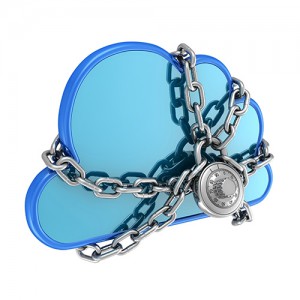 A lot of attention lately has been paid to the security of the cloud, particularly Apple’s iCloud service. There have been recent high profile celebrity hacks resulting in the sharing of photos that were thought to be private. The question I have been reading in the last couple of weeks, even in my local newspaper, is this: Is the cloud safe? The answer, maddeningly, is yes and no. This blog post will cover the definition of the cloud and how you can make the answer to that question “yes.”
A lot of attention lately has been paid to the security of the cloud, particularly Apple’s iCloud service. There have been recent high profile celebrity hacks resulting in the sharing of photos that were thought to be private. The question I have been reading in the last couple of weeks, even in my local newspaper, is this: Is the cloud safe? The answer, maddeningly, is yes and no. This blog post will cover the definition of the cloud and how you can make the answer to that question “yes.”
Defining the Cloud
The cloud is really just a term for offsite storage. It is a convenient place to store files, whether they are photos, contact lists, or e-mails, so that you can access them from multiple devices in multiple locations. Say, for example, you take a picture from your smartphone and wish to view those same pictures from your tablet or your laptop or share them with friends. Rather than carrying those pictures around on a hard drive to view them on different devices or show friends, those pictures are stored in a common place, in the cloud storage. The cloud goes by different names such as iCloud, Google Drive, Google+, and Microsoft OneDrive. It also goes by names such as Pinterest, Tumblr, Facebook, and Twitter. Basically it is a common place to store, retrieve, and manipulate your files. The question then becomes: What if you want to take a picture but NOT store it in the cloud?
It’s All in the Sync
The key is to understand when your device is synchronizing with the cloud or with another device. In Android, for example, there is a Google Drive app that is an interface to help you download and sync files between your Android device and the cloud. You can also swap files between Android and your Google+ account or between Android and your Dropbox or Box account using a simple app.
Developers have done their best to make these apps intuitive and user friendly, but they have also masked the complexity of moving files back and forth to the cloud or to another device. As a result, some smartphone users just push the “sync all” button, which duplicates all files to the cloud. This is great for backup, but it also means that your files are now in a less secure area than just your phone. As recent events show, there are still some vulnerabilities in the cloud, and occasionally a cloud service is breached and personal data is compromised. One answer to this is to employ an application such as Encdroid for the Android OS, which encrypts your files and makes them more difficult to hack. Another solution is to understand where your files are and how they are getting there.
Thoughts
My challenge to you this week is to review your files and take an inventory of where you are storing everything. You may have signed up for a Google+ account and forgotten about it. When you get that new Android phone, however, you can bet the good folks at Google have a record of that account and would be happy to send all of your files to be backed up there. Be a savvy technology user and make sure you understand whether you are vulnerable and in what areas. In the end, that knowledge will make you and your data safer.
 About Kelly Brown
About Kelly Brown
Kelly Brown is an IT professional, adjunct faculty for the University of Oregon, and academic director of the UO Applied Information Management Master’s Degree Program. He writes about IT and business topics that keep him up at night.
